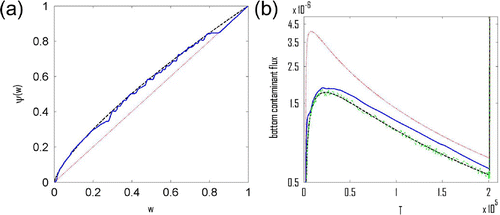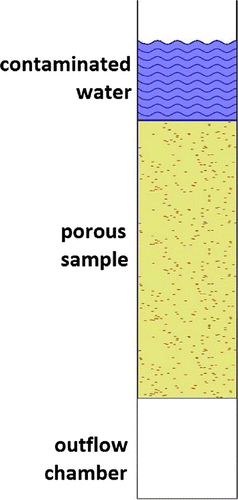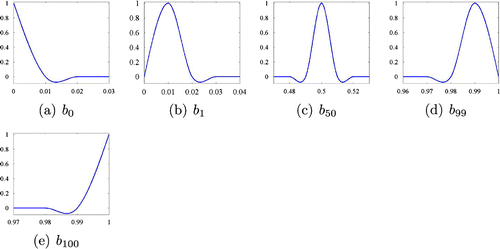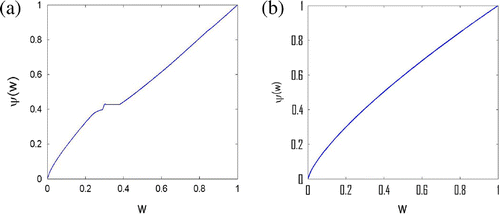Figures & data
Figure 4. Red (dot): initial linear iteration ; black (dash-dot): Freundlich isotherm (Equation56
(56)
(56) ); blue (solid): final iteration
.
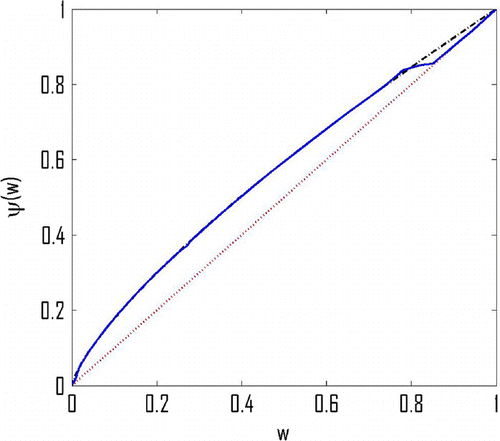
Figure 5. Red (dot): initial linear iteration ; black (dash): Langmuir isotherm (Equation57
(57)
(57) ); blue (solid): final iteration
.
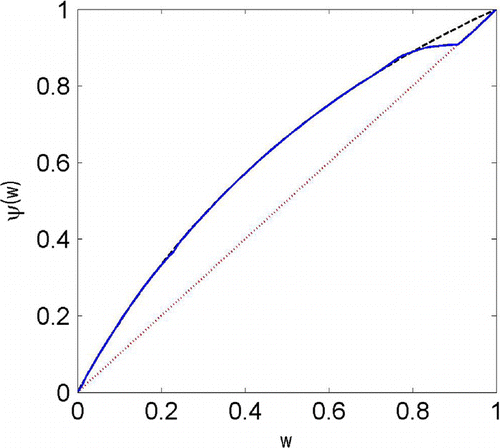
Figure 6. (a) Red (dot): initial linear iteration ; black (dash): Freundlich isotherm (Equation56
(56)
(56) ); blue (solid): final iteration
. (b) Red (dot):
corresponding to
; black (dash):
corresponding to Freundlich isotherm (Equation56
(56)
(56) ); blue (solid): both
corresponding to final iteration
and
obtained by running simulation using Freundlich isotherm (Equation56
(56)
(56) ) and subsequently altered by the perturbation (Equation58
(58)
(58) ).
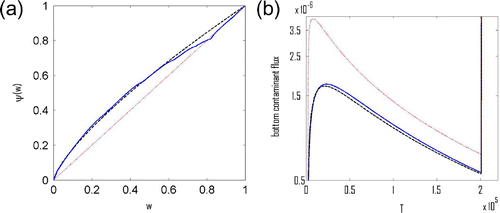
Figure 7. (a) Red (dot): initial linear iteration ; black(dash): Langmuir isotherm (Equation57
(57)
(57) ); blue (solid): final iteration
. (b) Red (dot):
corresponding to
; black (dash):
corresponding to Langmuir isotherm (Equation57
(57)
(57) ); blue (solid): both
corresponding to final iteration
and
obtained by running simulation using Langmuir isotherm (Equation57
(57)
(57) ) and subsequently altered by the perturbation (Equation58
(58)
(58) ).
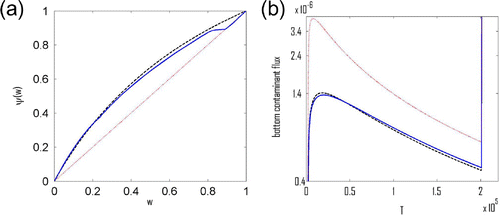
Figure 8. (a) Red (dot): initial linear iteration ; black (dash): Freundlich isotherm (Equation56
(56)
(56) ); blue (solid): final iteration
. (b) Red (dot):
corresponding to
; black (dash):
corresponding to Freundlich isotherm (Equation56
(56)
(56) ); blue (solid):
corresponding to final iteration
; green (dash-dot):
obtained by running simulation using Freundlich isotherm (Equation56
(56)
(56) ) and subsequently altered by the random noise.
